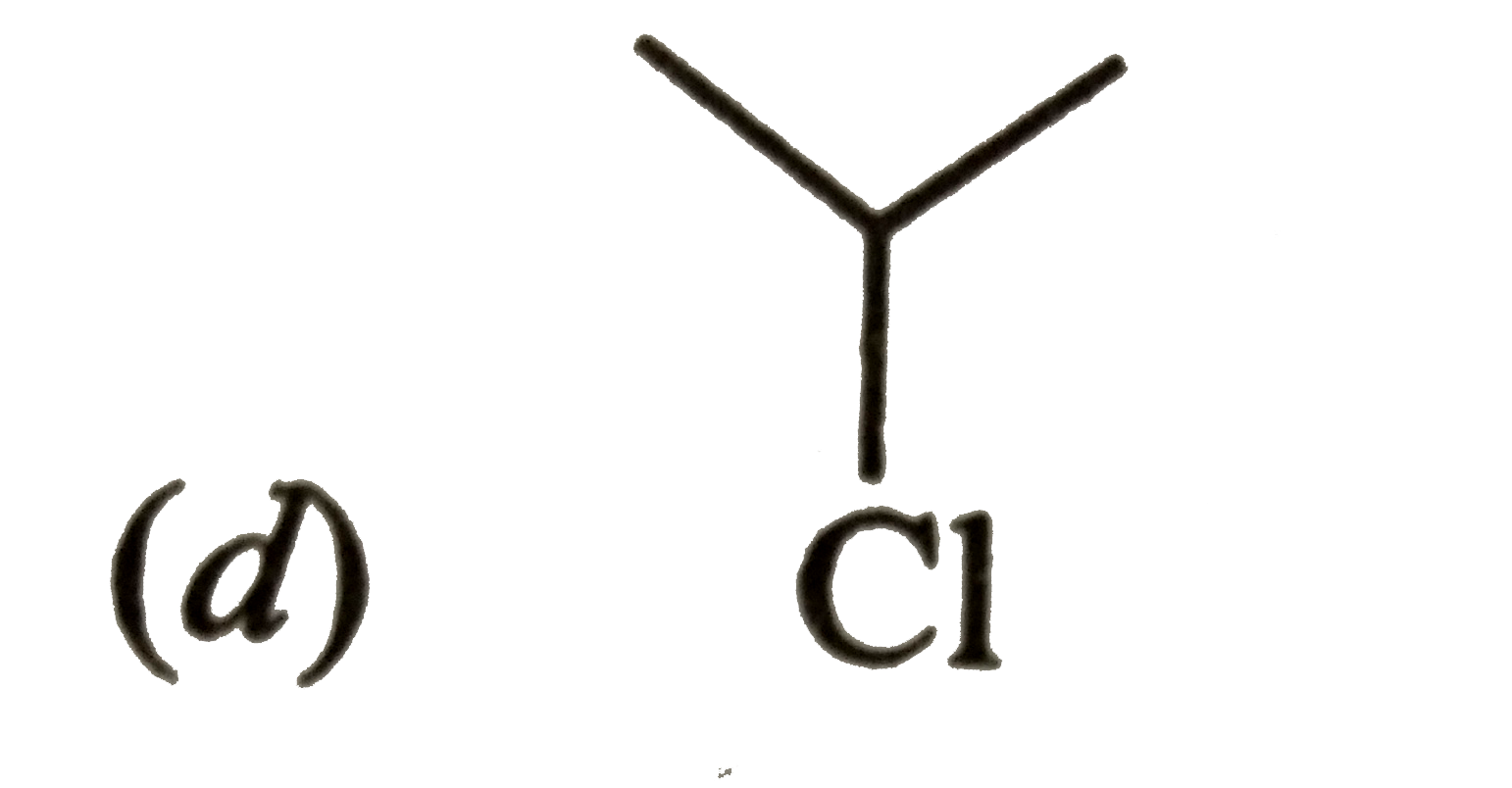Propene when heated with chlorine at about 500∘ C forms
CH2Cl.CH=CH2
CH3.CHCl.CH2Cl
CH2Cl.CHCl.CH2Cl
All of three
The correct Answer is:A
To solve the question about the reaction of propene with chlorine at about 500°C, we will follow these steps:
Step 1: Identify the Reactants
The reactant in this reaction is propene, which has the molecular formula C3H6. Its structure can be represented as:
CH2=CH−CH3
Step 2: Understand the Reaction Conditions
The reaction occurs at high temperature, specifically around 500°C. At this temperature, chlorine (Cl2) can undergo homolytic cleavage to form chlorine radicals (Cl•).
Step 3: Describe the Mechanism
At high temperatures, the reaction proceeds via a radical mechanism rather than an electrophilic addition. The chlorine radicals will react with the double bond in propene.
Step 4: Formation of the Product
When a chlorine radical reacts with propene, it can abstract a hydrogen atom, leading to the formation of a new radical. The chlorine radical will then add to the carbon atom that was involved in the double bond, resulting in the formation of a stable compound.
The structure of the product formed is:
CH2Cl−CH=CH2
This compound is known as 1-chloro-2-propene.
Final Answer
Therefore, the product formed when propene is heated with chlorine at about 500°C is:
CH2Cl−CH=CH2
---
The reactant in this reaction is propene, which has the molecular formula C3H6. Its structure can be represented as:
CH2=CH−CH3
The reaction occurs at high temperature, specifically around 500°C. At this temperature, chlorine (Cl2) can undergo homolytic cleavage to form chlorine radicals (Cl•).
At high temperatures, the reaction proceeds via a radical mechanism rather than an electrophilic addition. The chlorine radicals will react with the double bond in propene.
When a chlorine radical reacts with propene, it can abstract a hydrogen atom, leading to the formation of a new radical. The chlorine radical will then add to the carbon atom that was involved in the double bond, resulting in the formation of a stable compound.
CH2Cl−CH=CH2
This compound is known as 1-chloro-2-propene.
Therefore, the product formed when propene is heated with chlorine at about 500°C is:
CH2Cl−CH=CH2
Topper's Solved these Questions
- HYDROCARBONBook:ERRORLESS Chapter:HYDROCARBONExercise:ORDINARY THINKING (Objective question) (ALKYNE)
Explore 120 Videos
- HYDROCARBONBook:ERRORLESS Chapter:HYDROCARBONExercise:ORDINARY THINKING (Objective question) (AROMATIC HYDROCARBON)
Explore 128 Videos
- HYDROCARBONBook:ERRORLESS Chapter:HYDROCARBONExercise:JEE SECTION (Matrix Match type questions)
Explore 6 Videos
- HALOGEN CONTAINING COMPOUNDBook:ERRORLESS Chapter:HALOGEN CONTAINING COMPOUNDExercise:Critical Thinking (Jee (Advanced) 2018)
Explore 1 Video
- IONIC EQUILIBRIUMBook:ERRORLESS Chapter:IONIC EQUILIBRIUMExercise:JS Jee Section (JEE Advanced (Numeric answer type question))
Explore 1 Video
Similar Questions
Knowledge Check
Butene when treated with chlorine at about 500∘C forms:
AMeCH2CHCl−CH2ClBMeCH(Cl)−CH=CH2CClCH2CH2CH=CH2DMeC(Cl)2CH=CH2When propene is treated with chlorine at 500∘C, allyl chlroide is formed as the main product. The mechanism of the reaction is:
Afree radical additionBfree radical substitutionCelectrophilic additionDelectrophilic substitutionPropene on reaction with chlorine water gives
A B
B C
C D
D
When ethane is heated with air at 500∘C, we get
View SolutionWhen ethane is heated with air, at 500∘C, we get
View SolutionWhich is formed when benzene is heated with chlorine in the presence of sunlight
View SolutionWhen ethane is heated with air at 500∘C, we get
View SolutionWhen ethane is heated with air at 500∘C, we get
View Solution

